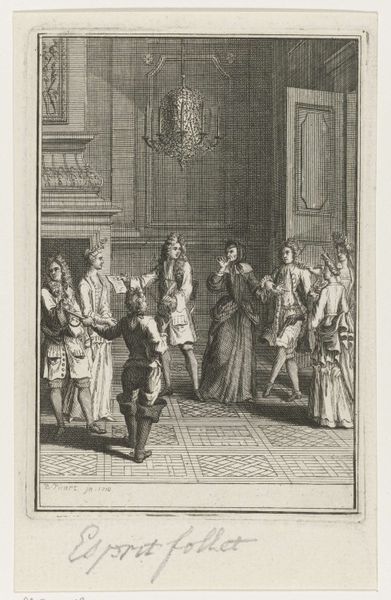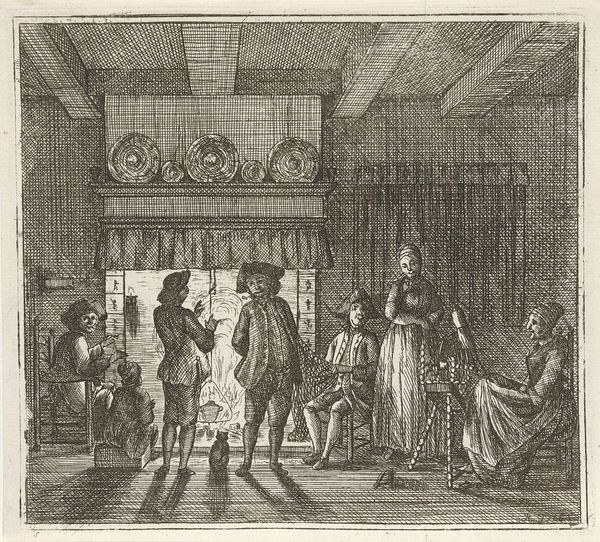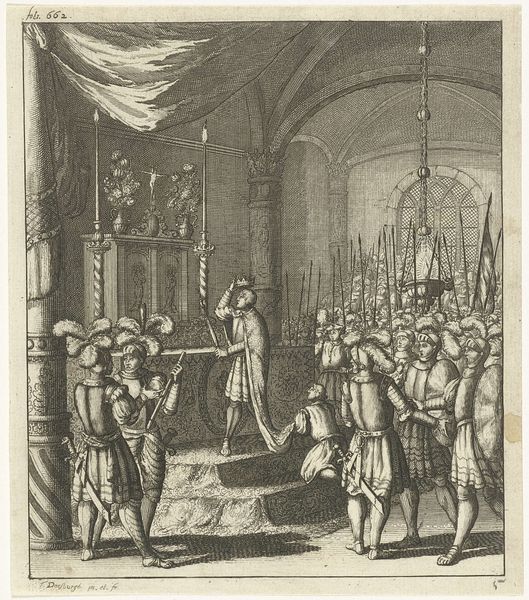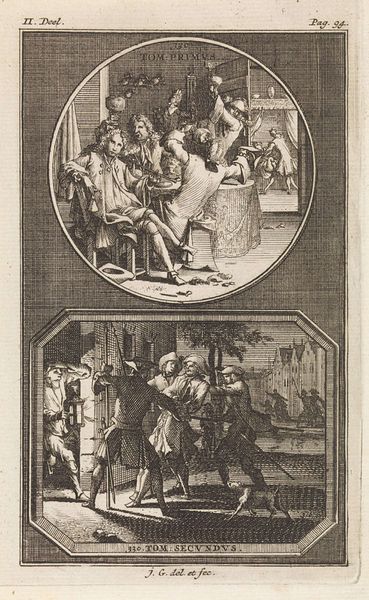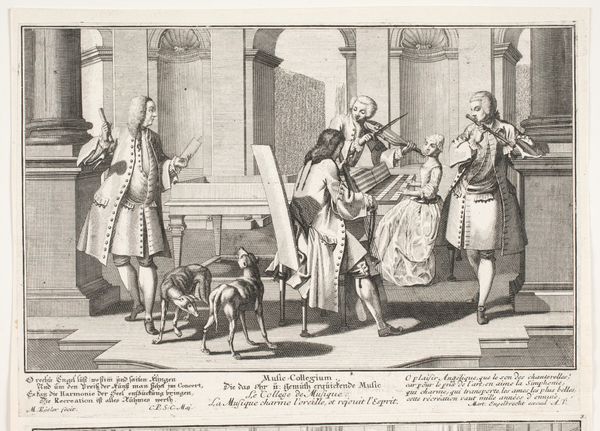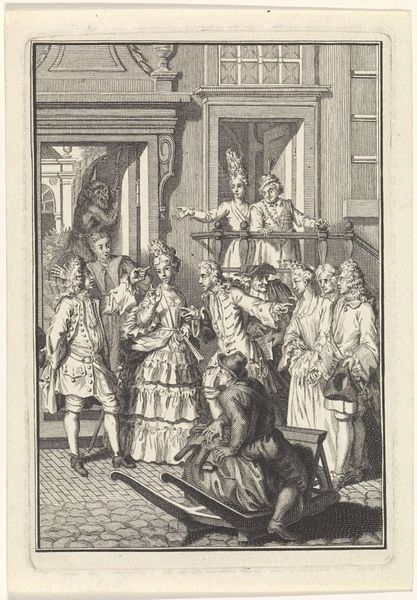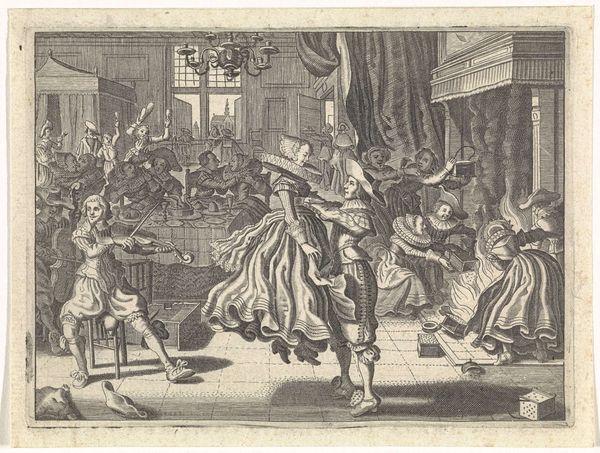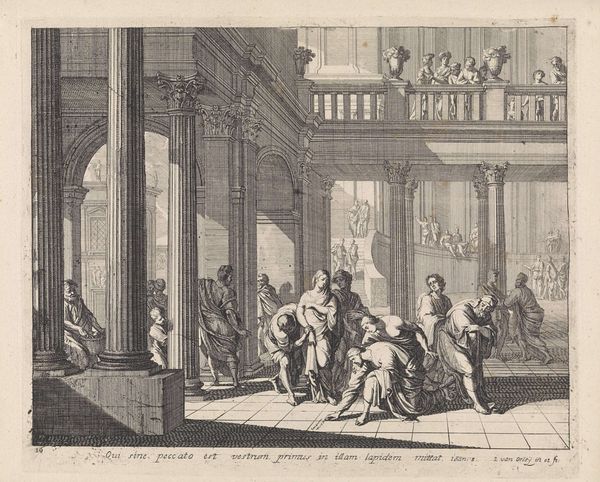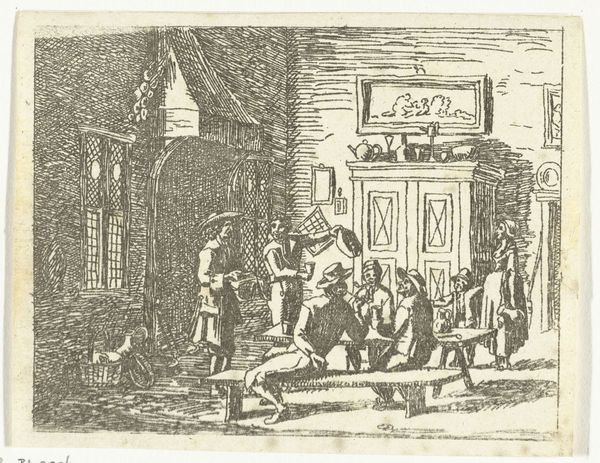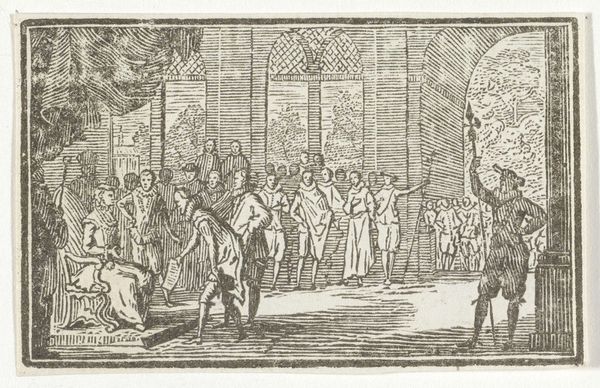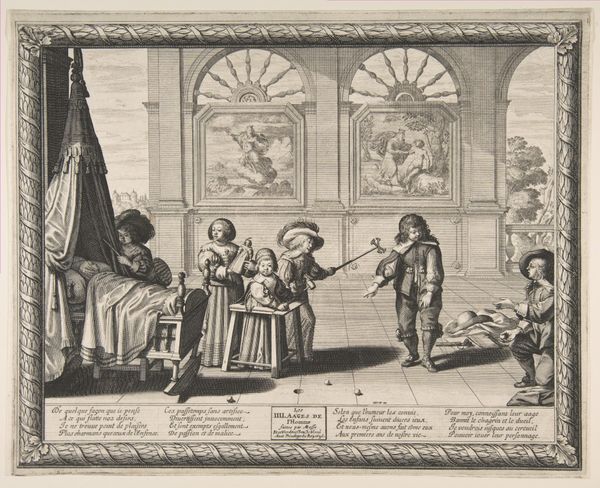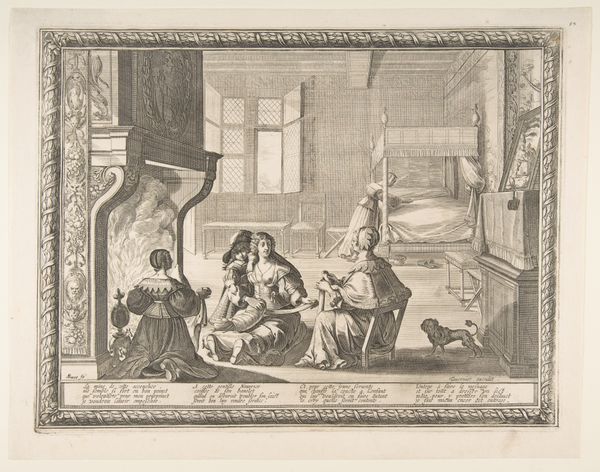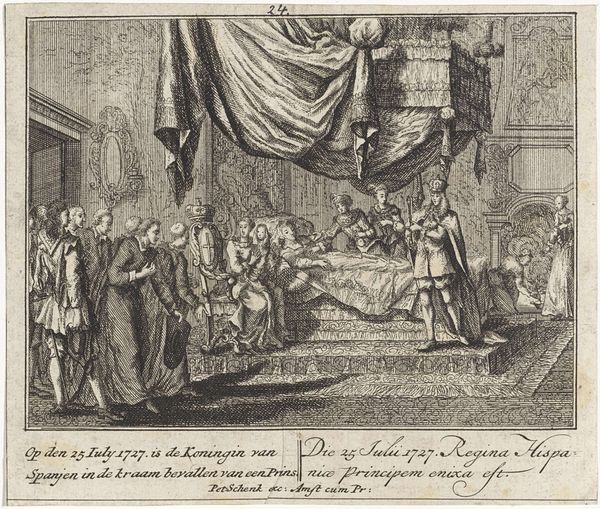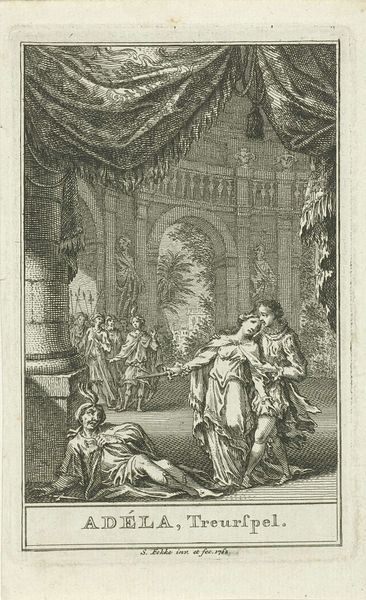
Spotprent op de Hollandse en Zeeuwse edelen die prins Willem IV het markiezaat van Veere en Vlissingen betwisten, ca. 1733 1732 - 1734
0:00
0:00
print, engraving
#
baroque
# print
#
pen illustration
#
cityscape
#
genre-painting
#
history-painting
#
engraving
Dimensions: height 178 mm, width 285 mm
Copyright: Rijks Museum: Open Domain
Curator: Isn't it funny how something as simple as a print can hold so much biting commentary? This engraving, created around 1733, is snarkily titled "Spotprent op de Hollandse en Zeeuwse edelen die prins Willem IV het markiezaat van Veere en Vlissingen betwisten," roughly translating to "Satirical print on the Holland and Zeeland nobles who contested Prince William IV's title to the Marquisate of Veere and Vlissingen." Editor: My initial impression? Stagey. There's a definite theatricality to it, the figures posed like actors on a set. But what strikes me most is how the composition is sharply divided into two distinct realms: the interior with its intricate wall details and the calm outside view, split and disparate. Curator: Precisely! Note how the artist, though anonymous, used the contrast between the orderly interior where the nobles play backgammon, oblivious to the looming political consequences, and the serene landscape outside, possibly representing the actual territories in question. This divide is quite intentional. Editor: So, the backgammon game then is symbolic. Are we to take the game's players as stand-ins for the political figures involved? The one off to the side especially looks like an extra—maybe just there to watch the political gambit unfold. The engraver certainly seems to enjoy the rendering of fine details, and notice how baroque interior stylings set up the players for a very deliberate criticism of social elites? Curator: I like your reading about baroque interior setting up for criticism. The print employs typical Baroque theatrical framing, setting a somber tone through sharp lines and contrasts, which definitely enhances its persuasive power and lends an epic grandeur to the satire. The Dutch golden age interior represents established political dynamics; however, that open window points towards change, reflecting that those nobles were literally, figuratively trapped between old and new. Editor: But, doesn't the black-and-white medium emphasize this dynamic too? You only get two colors and all the drama. Curator: Right? It’s a piece of propaganda using the subtlety of art. Makes you wonder what other conversations happened around backgammon boards! It's fascinating to consider the reach and influence it could’ve had. Editor: Absolutely, and honestly? As relevant today as it was back then, this satire, if not for the clothes of elites playing games of strategy and domination, would read as very modern social commentary.
Comments
No comments
Be the first to comment and join the conversation on the ultimate creative platform.
